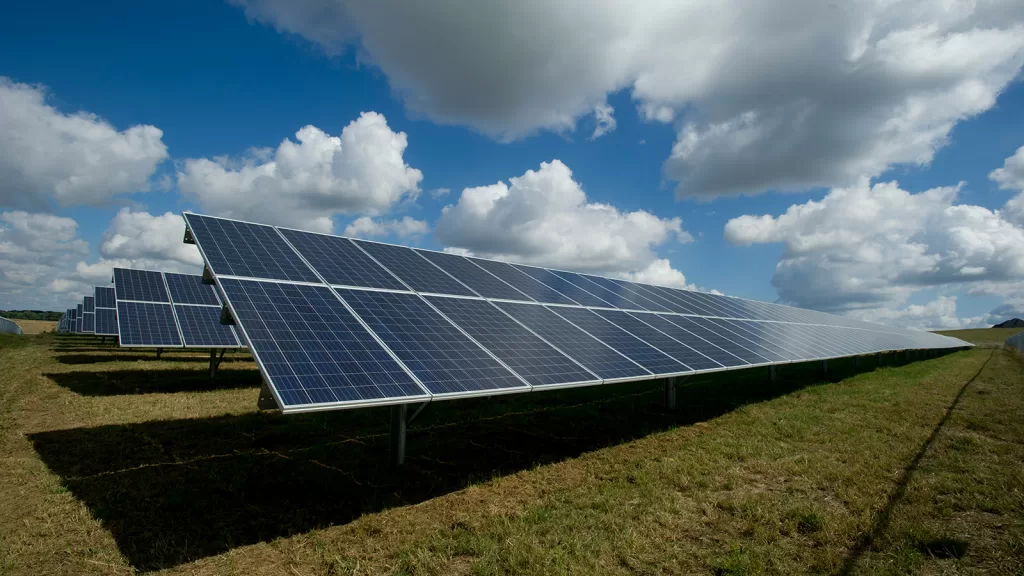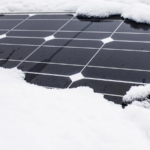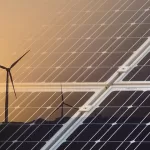1. Introduction
2. How Does Agrivoltaics Work?
3. How Does Agrivoltaics Create Dual Economic Benefits?
4. How to Choose Suitable PV Products for Farms?
5. How Policies Support Agrivoltaics
6. Conclusion
Introduction
As an innovative energy solution, agrivoltaics is rapidly expanding worldwide, proving its significant effectiveness in agriculture. Agrivoltaics not only offers an energy-saving solution but also brings tangible economic benefits to farmers. By installing solar PV systems on fields, pastures, and greenhouses, farmers can harness solar energy, increase land use efficiency, and boost income.
How Does Agrivoltaics Work?
Agrivoltaic systems convert solar energy into electricity using solar panels, while the land underneath remains dedicated to agricultural production. A typical agrivoltaic system comprises solar panels, mounting structures, inverters, and cables. Solar panels are often installed on elevated structures above the field to ensure crops receive sufficient sunlight and rain. For example, panels mounted 3-4 meters high allow a light transmission rate of 15-30%, ensuring that crop growth is unaffected. This system complements agricultural production and provides farmers with additional income, while increasing crop yields. Studies indicate that agrivoltaic systems can increase farmers’ income by 20-30% in certain areas, making agrivoltaics an effective approach to boost farmer income and promote renewable energy.
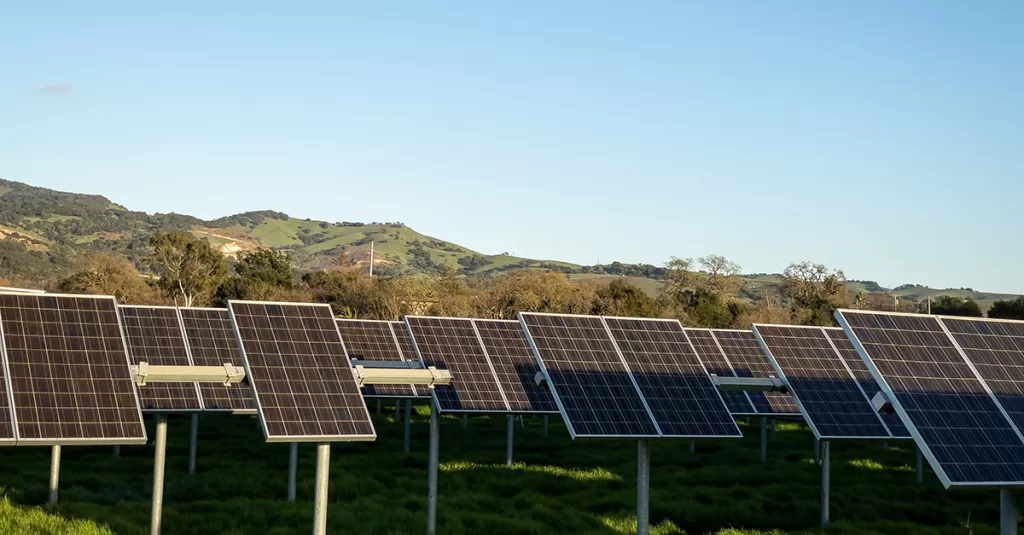
How Does Agrivoltaics Create Dual Economic Benefits?
With the global demand for sustainable development and green energy rising, agrivoltaics provides agriculture with a clean, renewable energy source, while bringing significant economic returns by improving crop growth environments and enhancing land-use efficiency. Specifically, agrivoltaics creates value for farmers in two main ways: saving energy costs and generating stable income through electricity sales and by optimizing crop growth conditions to improve yields.
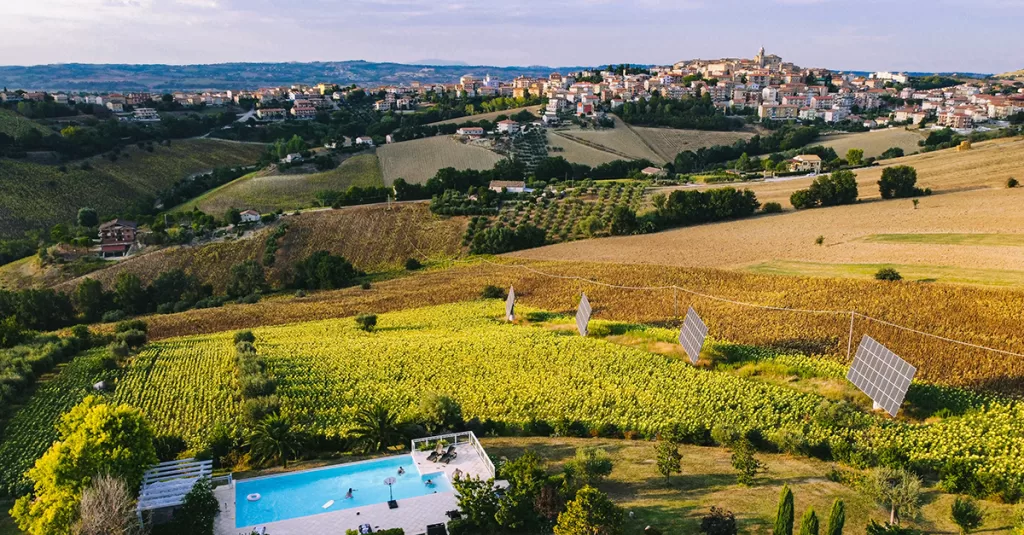
1. Energy Income: Savings on Power Costs and Electricity Sales
Savings on Power Costs
One of the major advantages of agrivoltaics is its ability to reduce power costs for farmers. In traditional farming, many farms require large amounts of energy for daily operations, such as irrigation, greenhouse heating, refrigeration, and agricultural machinery use. For example, greenhouse cultivation has high energy demands, especially in colder seasons, while water pumps and irrigation systems in drought-prone areas consume significant electricity, making energy a major expense for farms.
By converting solar energy into electricity, farmers can use this power to meet their daily agricultural needs, reducing dependence on external grids. Self-consumption reduces farmers’ reliance on traditional power grids, particularly in regions with high electricity costs, which is crucial for agricultural operations. Agrivoltaic systems provide a stable power supply, reduce power costs, and decrease reliance on fossil fuels, helping farmers achieve energy autonomy and sustainable production.
Electricity Sales
In addition to saving energy expenses, agrivoltaic systems offer additional income sources. Many European countries have subsidy policies, encouraging farmers to sell surplus power back to the public grid. In sunny regions, agrivoltaic systems can generate a large amount of electricity, allowing farmers to earn long-term, stable income by selling excess power through Power Purchase Agreements (PPA) and benefiting from government subsidies, which helps farmers manage production uncertainties and market fluctuations.
Net metering policies in many European countries, such as Germany, Italy, France, and the Netherlands, allow farmers to receive full compensation for electricity sold, based on market prices during consumption, thereby achieving higher economic returns.
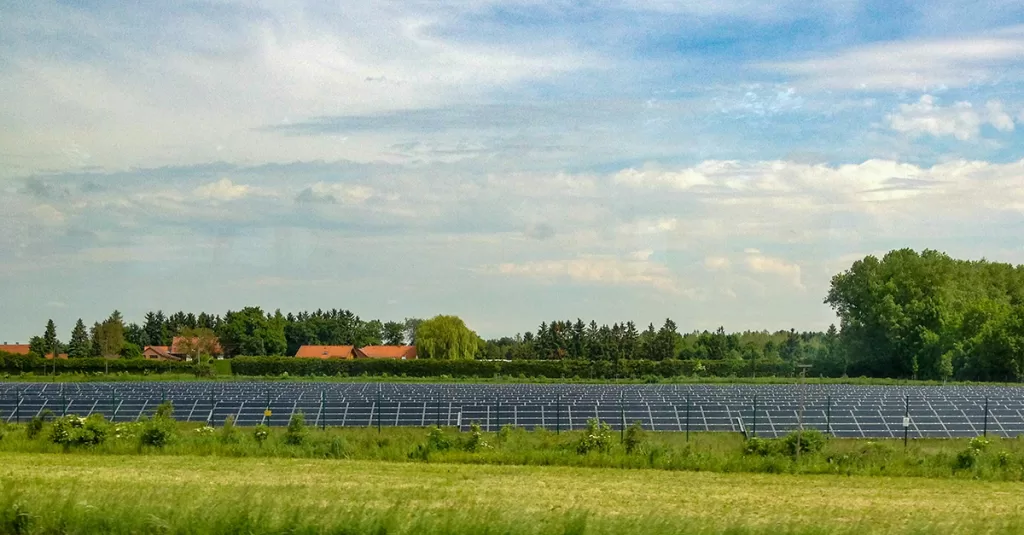
2. Agricultural Production Gains: Improved Crop Environment and Quality
Improved Crop Environment
Agrivoltaics provides partial shading, reducing heat and intense sunlight, directly improving crop growth conditions. In areas with extreme heat and drought, crops often face heat stress and water shortages. Agrivoltaics helps maintain soil moisture and reduce evaporation, lowering irrigation demands and preserving water resources. In addition, agrivoltaic systems benefit greenhouse cultivation, providing power for climate control, lighting, and ventilation, while optimizing light intensity to create an ideal growing environment.
Improved Crop Quality and Yield
Agrivoltaics improves growing conditions, resulting in better crop quality and yield. By moderating temperature and humidity, agrivoltaic systems create a stable environment for crops, enhancing health and productivity. For greenhouses, the energy from agrivoltaics supports temperature and lighting systems and helps optimize growth conditions. For example, certain crops like grapes and tomatoes require specific light conditions. Agrivoltaics can adjust light intensity during specific periods, improving quality, shortening growth cycles, and increasing overall yields. Additionally, agrivoltaics adds value to agricultural products, allowing farmers to grow more high-value crops, such as organic vegetables and fruits, further increasing farm income. High-quality crops generally fetch higher market prices, raising farmers’ overall income.
Improved Land Use Efficiency
Agrivoltaics allows dual use of land by installing solar panels on fields or pastures, enabling both crop production and power generation. In traditional farming, land use is generally limited to agricultural production. Agrivoltaics allows the same land to be used for farming and power generation, enhancing land productivity. For farms with limited land, especially those growing high-value crops or livestock, this dual-use model maximizes land productivity.
How to Choose Suitable PV Products for Farms?
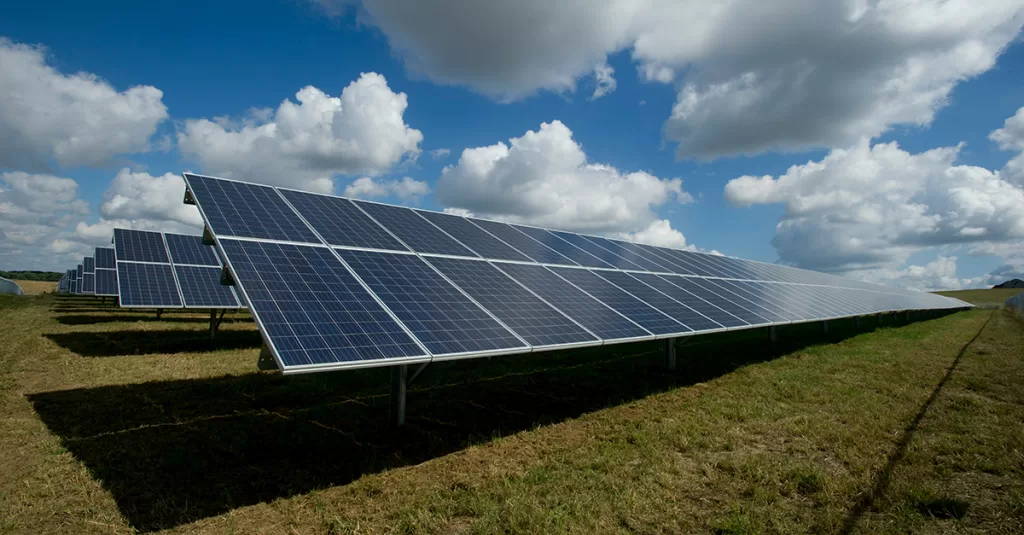
Choosing the right PV products ensures efficient system operation and maximizes economic returns. Key considerations include:
1.Farm Size and Power Needs
Farm size and energy needs directly impact PV system choice. Small farms may need systems in the 5-10kW range, while large farms or greenhouses may require higher capacities. Agrivoltaic systems typically range from 20kW to 1MW to meet various needs.
2.Geographic Location and Sunlight Conditions
Sunlight conditions affect PV system performance. Sunny regions require fewer panels, while areas with weaker sunlight need high-efficiency panels. Bifacial panels are suitable for maximizing power output under variable light conditions, especially beneficial in areas with fluctuating sunlight.
3.Type and Technology of PV Panels
Different PV technologies impact system efficiency and long-term performance. High-efficiency technologies like HJT and N-TOPCon PV panels offer high conversion efficiency and heat resistance, making them suitable for agricultural use.
HJT panels feature unique heterojunction design, forming a thin film between crystalline and amorphous silicon layers, reducing surface defects and achieving conversion efficiencies of up to 25%. The dual-sided design absorbs light from both sides, providing 10-35% more energy from the backside compared to PERC or TopCon, ideal for maximizing land use. Its low degradation ensures stable performance, with only 11.1% degradation over 30 years.
N-TOPCon panels use advanced passivated contact technology, reducing charge recombination and increasing conversion efficiency to as high as 28.7%, well above traditional PERC technology. The bifaciality over 85% further enhances land use. Under low light, N-TOPCon cells’ current efficiency is 0.5-1.0% higher than PERC, ideal for challenging climates.
4. Cost and ROI
High-efficiency panels have a higher upfront cost, but superior energy efficiency and longevity lead to higher long-term returns. Choosing durable panels provides farmers with stable power supply, reduced maintenance costs, and a shorter payback period. Systems using advanced PV panels typically have a payback period of 5-7 years, compared to 8-10 years for traditional systems.
How Policies Support Agrivoltaics
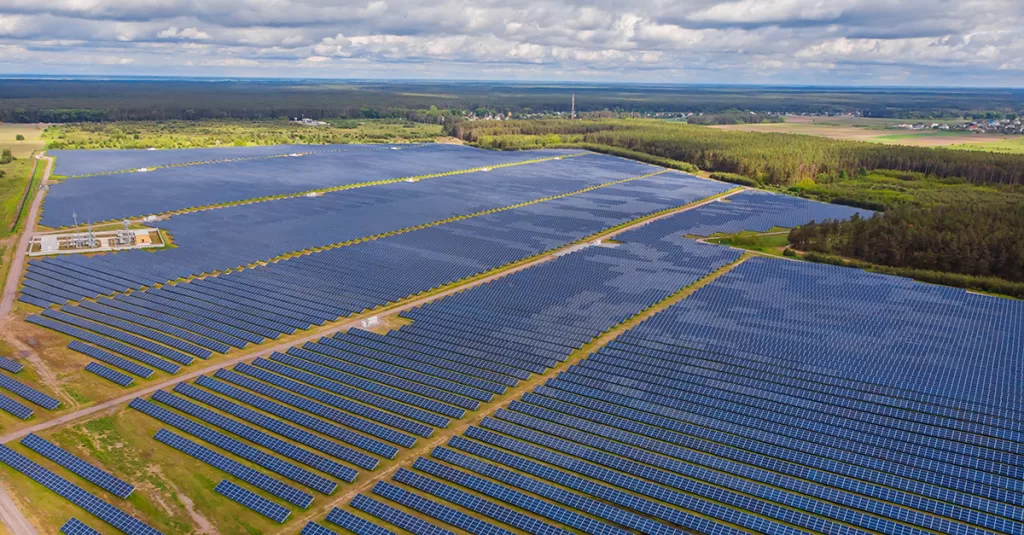
The widespread application of agrivoltaics is due to both technological advances and policy support. In Europe, many countries promote agrivoltaics through generous subsidies and incentives, helping farmers reduce initial investment costs and ensuring stable returns.
In France, Act 2024-318, issued in April 2024, outlines PV installation conditions in agricultural areas, ensuring at least 90% of crop yield per hectare and limiting PV system area to 40% of farmland. Additionally, PV systems must not negatively impact soil potential and should keep crop yield loss under 10%.
Germany’s revised Renewable Energy Act (EEG) 2023 provides fixed tariffs for agrivoltaic projects, subsidizing 0.06-0.10 EUR/kWh in the first 20 years, depending on project size and location. For greenhouse agrivoltaic projects, higher subsidies encourage farmers to power greenhouses.
Italy’s agrivoltaic bidding program subsidizes up to 500MW of projects annually, offering 0.05-0.08 EUR per kWh based on project size and technology. Policies limit PV coverage to 40% of farmland and restrict crop yield loss to 5%.
Many European countries also implement net metering policies to optimize compensation for electricity sales. For example, in the Netherlands, farmers can return unused electricity to the grid, earning market-rate compensation, providing additional annual income.
Policy support makes agrivoltaics a key tool for farmers to increase income and promote sustainable agriculture, ensuring economic returns for both farmers and investors.
Conclusion
Agrivoltaics is an innovative energy solution offering dual benefits to farmers. By reducing electricity costs and selling surplus power, farmers gain a stable income source. The elevated design of PV systems enhances crop growth and land use efficiency, boosting agricultural output. This dual economic benefit helps farmers increase income while promoting agricultural sustainability.
As policies and technology progress, the global outlook for agrivoltaics is promising. European governments support this growth through subsidies and PPAs, effectively lowering initial investment costs for farmers and ensuring stable returns. These measures drive rapid agrivoltaic development, making it a crucial force in agriculture’s green transition. Agrivoltaics will continue providing economic returns, promoting deep integration of agriculture and renewable energy, and contributing to sustainable agriculture goals.
Since 2008, Maysun Solar has been committed to delivering high-quality agrivoltaic solutions that support sustainable agriculture and help tackle climate change. Our innovative IBC, HJT, TOPCon, and Bifacial solar modules are designed for outstanding efficiency and durability, enabling long-lasting performance in agrivoltaic environments. With established offices and warehouses across multiple countries and trusted partnerships with leading installers, we provide comprehensive support for seamless integration of agrivoltaics into farming practices. For the latest quotes or inquiries related to agrivoltaic systems, please feel free to contact us—we’re here to support your journey towards greener, more efficient farming.
References:
Enkhardt, S. (2024, April 15). France’s Agricultural PV Subsidies Boost Solar Uptake in Farming Sectors. PV Magazine France.
Bundesnetzagentur. (2023, July 10). Erneuerbare-Energien-Gesetz (EEG): Unterstützung für Agri-PV-Projekte in Deutschland.
Ministero dell’Ambiente e della Sicurezza Energetica. (2024, May 8). Italian Agri-PV Bidding Program Annual Report.
Rijksdienst voor Ondernemend Nederland (RVO). (2024, March). Netto-metering en steunregelingen voor zonne-energie in de landbouwsector.

Empowering Factories with Solar Energy A Strategic Tool for Controlling Production Electricity Costs
Commercial and industrial solar is becoming a key solution for factories to reduce electricity costs and hedge against price fluctuations. This article systematically analyzes its deployment models, cost advantages, and sustainable value pathways.

How Businesses Can Offset Carbon Taxes with Solar Power
This article analyzes the latest carbon tax policies and photovoltaic deduction strategies, helping European businesses legally reduce taxes, increase profits through solar investment, and achieve a win-win situation for both economy and environment.

Forecast and Response: Seizing the Next Decade’s Growth Dividend in Europe’s Commercial and Industrial Photovoltaics Market
Maysun Solar analyzes the growth trends of commercial and industrial photovoltaics in Europe over the next ten years, from policies and ESG to technological innovation, helping companies seize the initiative in the energy transition.

How to Calculate Solar System ROI and Optimize Long-Term Returns?
Solar power is becoming a key solution for businesses to reduce costs and improve efficiency. Accurately calculating ROI and optimizing long-term returns are essential to maximizing investment value.

Will Agrivoltaics Affect Crop Growth?
Agrivoltaics combines solar energy and agriculture to reduce up to 700 tons of CO₂ per MW, improve water use, and boost crop growth for sustainable farming.

6.5 Billion Loss Hits Photovoltaics: Reshaping or Elimination?
In 2025, the photovoltaic market may see a turnaround as some companies take early action. A €6.5 billion loss is driving businesses to explore new growth areas like energy storage and hydrogen. Which giants will break through? Industry transformation is accelerating!

